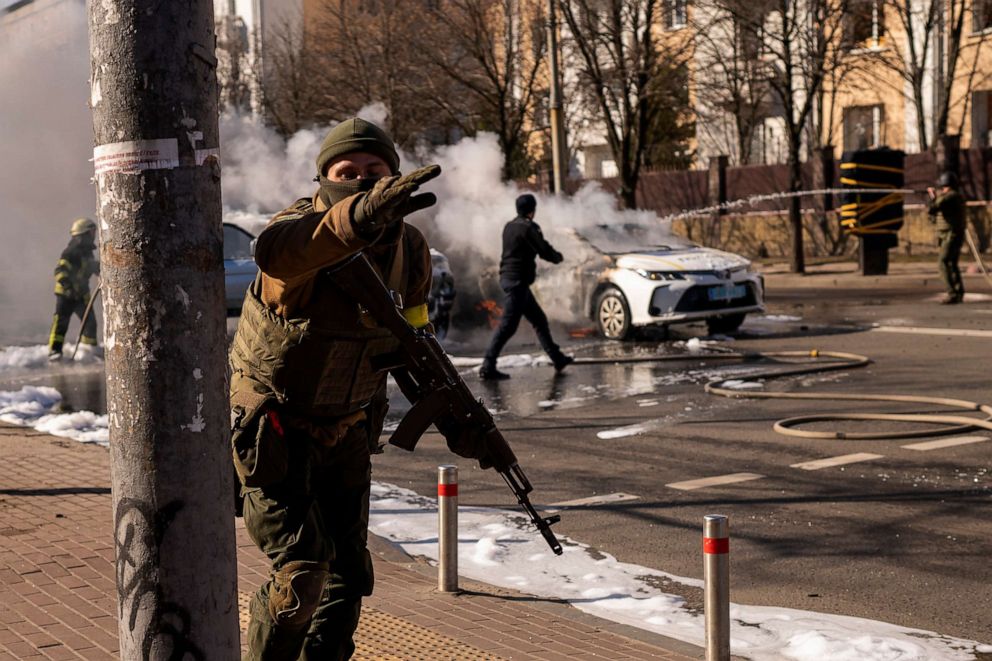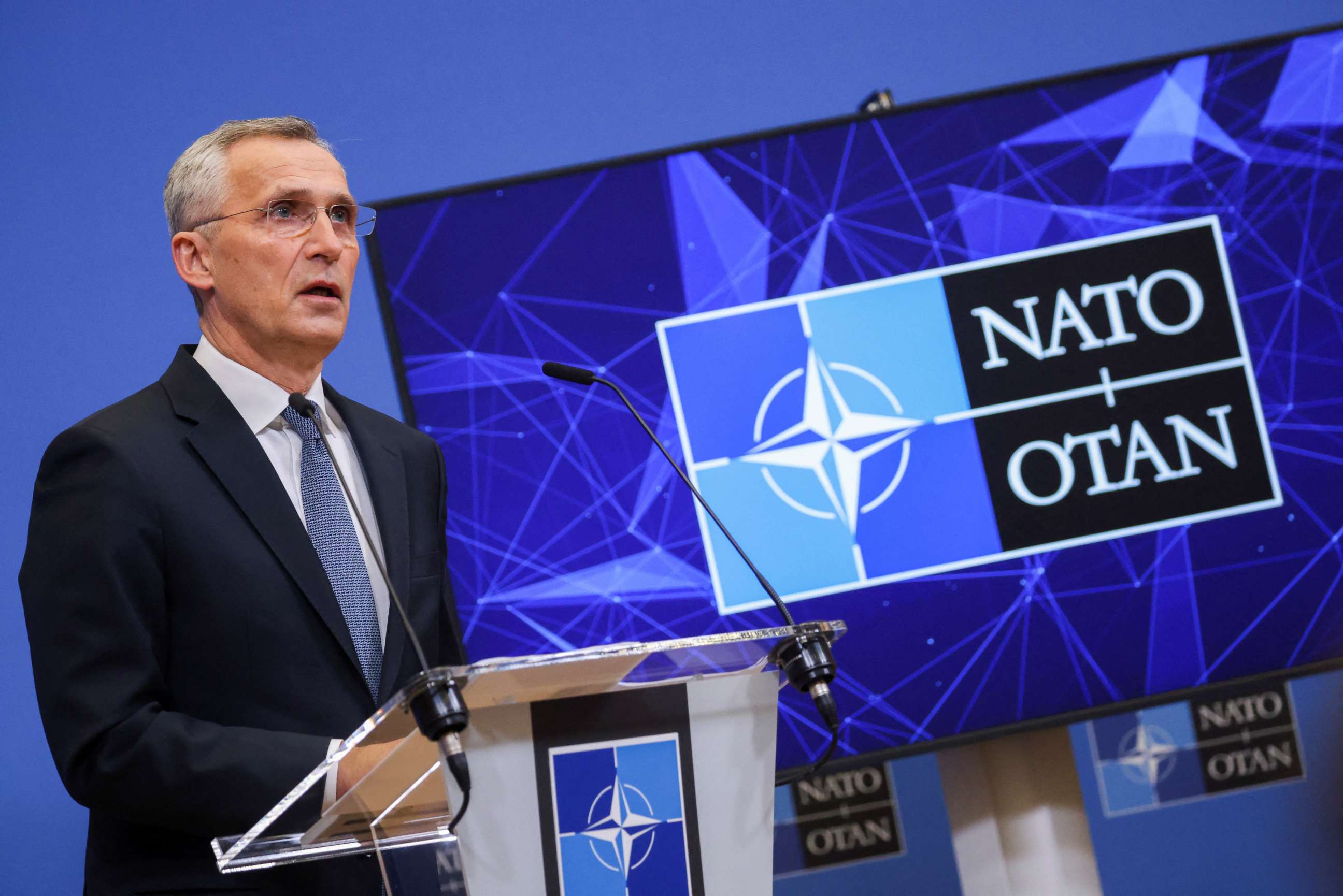NATO's Article 5 could pull the US and its allies further into the Russia-Ukraine conflict
Ukraine shares its border with 4 NATO members.
President Joe Biden repeatedly has said the United States will not be sending troops to fight Russia in Ukraine, but vowed that the U.S. would defend its NATO allies.
"As I made crystal clear, the United States will defend every inch of NATO territory with the full force of American power," he reiterated in an address Thursday.
The main goal of the North Atlantic Treaty Organization's founding in 1949 was to foster mutual assistance in response to the Soviet Union's expansion in Europe. A key component of the treaty, Article 5, covers "collective defense," which means that an attack on one ally is considered an attack on all allies.
Amid the current crisis, Article 5 could mandate a more direct response from the U.S. and other treaty members if Russian aggression escalates beyond Ukraine.
NATO announced last week it launched its response force, a deployment of about 40,000 troops to provide land, air and naval assistance across the alliance. This is the first time the force has been deployed for a "deterrence and defence role," a NATO spokesperson said.
Charles Kupchan, a senior fellow at the Council on Foreign Relations and professor of international affairs at Georgetown University, told ABC News it is possible Article 5 could be invoked while the U.S. and its allies are providing military aid to Ukraine.
“Let's say that Russia succeeds in toppling the government. And it then tries to occupy and pacify Ukraine. Assuming that the U.S. and its allies attempt to get arms to a Ukrainian resistance movement, there's a not insignificant risk that Russia might try to interdict that flow. And that whether by design or by accident, an artillery shell or a missile or a bomb could land in Poland or another NATO country,” Kupchan said.
“And then we're looking at the prospect of an attack on NATO territory and the potential trigger of the Article Five collective defense guarantee, which then raises the prospect of potential military conflict between NATO and Russia,” Kupchan said.
All participating countries agree to the form of solidarity outlined in the article, making it a key component of the alliance. While Ukraine is not a member of NATO, it borders Poland, Hungry, Slovakia and Romania, which are members.

Ukraine has been moving toward the West and away from Russia, attempting to join both NATO and the European Union. Kupchan said its geographical location could be strategic during this conflict.
“In the current moment, Ukraine's border with four NATO countries affords it two important advantages,” Kupchan said. “One is refugees are able to seek asylum in NATO countries, and we're seeing hundreds of thousands of Ukrainians head west. And the other is that now that Ukraine's airspace is … dominated by Russia, the long border between Ukraine and NATO affords an opportunity to continue to funnel weapons and other sources of support to Ukraine."
The first time Article 5 was invoked was after the terrorist attacks of Sept. 11, 2001. The alliance had already identified terrorism as a risk affecting its security in 1999. In response to the attack, NATO engaged in the fight against terrorism, launching its first operations outside the Euro-Atlantic area to patrol the skies over the U.S.
In 2008, NATO appeared to open the door for Ukraine's membership saying it would become a member of the alliance, despite a lack of consensus between members, Kupchan said. NATO did not specify a pathway or timeframe for Ukraine to join the alliance.
“In 2008, the Bush administration wanted to proceed with what's called a Membership Action Plan for Ukraine and Georgia. And European partners were reluctant, in part because neither Ukraine nor Georgia was ready to join NATO and because of concern that NATO's enlargement to Georgia and Ukraine would be seen as provocative in Russia,” Kupchan said.
“Given the lack of consensus within NATO, the alliance agreed to issue a generic statement that Georgia and Ukraine would become NATO members, but didn’t specify a timeframe or a pathway,” Kupchan said.
Russian President Vladimir Putin linked the current crisis to Russia's NATO demands, including a guarantee that NATO will stop expanding to the East, in a video address days before Russia invaded Ukraine. Putin accused the U.S. and NATO of ignoring his demands and blamed the West for the Ukraine crisis.
"[Putin] has said explicitly that he wants to see NATO's military presence [reduced] in the eastern flank and that would include the three Baltic countries, Poland, Romania, Hungary, Slovakia, " Kupchan said. "He wants to see NATO pull its capability back."

"One of the tragic dimensions of this conflict is that the Russians knew full well, that Ukrainian membership in NATO was not under consideration. It was not on the table. And NATO governments were quite explicit about that. Nonetheless, Putin decided to invade the country," Kupchan said.
Its unlikely Putin would launch an attack on a NATO ally because he would be looking at a "full-scale war," he said.
"My guess is that he understands that this is a non-starter," Kupchan said.
In addition to NATO's deployment of its response force, it also said it was deploying a quick response brigade of 3,500 troops that could deploy on short notice while the larger unit gathers its troops from various member nations.
"Our measures are and remain preventive, proportionate and non-escalatory," a statement from NATO said last week.
Kupchan said it is still unclear how far west Russia will go into Ukraine.
"It's conceivable that there could be a rump in Ukraine that Russia does not try to grab hold of and Western Ukraine has generally been much more integrated into Europe, than into Russia," Kupchan said.




